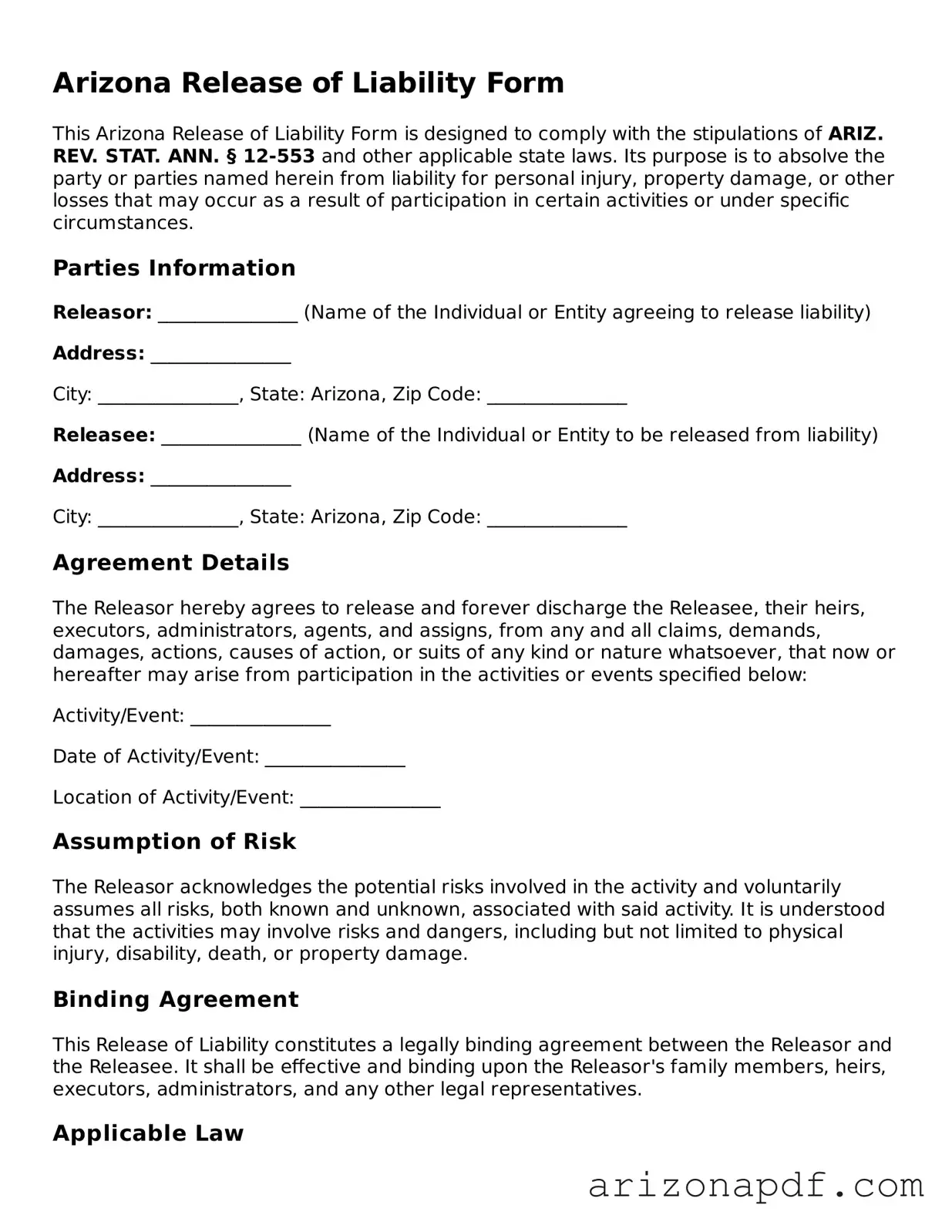Arizona Release of Liability Form
This Arizona Release of Liability Form is designed to comply with the stipulations of ARIZ. REV. STAT. ANN. § 12-553 and other applicable state laws. Its purpose is to absolve the party or parties named herein from liability for personal injury, property damage, or other losses that may occur as a result of participation in certain activities or under specific circumstances.
Parties Information
Releasor: _______________ (Name of the Individual or Entity agreeing to release liability)
Address: _______________
City: _______________, State: Arizona, Zip Code: _______________
Releasee: _______________ (Name of the Individual or Entity to be released from liability)
Address: _______________
City: _______________, State: Arizona, Zip Code: _______________
Agreement Details
The Releasor hereby agrees to release and forever discharge the Releasee, their heirs, executors, administrators, agents, and assigns, from any and all claims, demands, damages, actions, causes of action, or suits of any kind or nature whatsoever, that now or hereafter may arise from participation in the activities or events specified below:
Activity/Event: _______________
Date of Activity/Event: _______________
Location of Activity/Event: _______________
Assumption of Risk
The Releasor acknowledges the potential risks involved in the activity and voluntarily assumes all risks, both known and unknown, associated with said activity. It is understood that the activities may involve risks and dangers, including but not limited to physical injury, disability, death, or property damage.
Binding Agreement
This Release of Liability constitutes a legally binding agreement between the Releasor and the Releasee. It shall be effective and binding upon the Releasor's family members, heirs, executors, administrators, and any other legal representatives.
Applicable Law
This agreement shall be governed by and construed in accordance with the laws of the State of Arizona. Any disputes arising under or connected in any way to this agreement shall be adjudicated exclusively in the courts of the State of Arizona.
Signatures
By signing below, the Releasor acknowledges having read and understood this Release of Liability and voluntarily agrees to its terms.
Releasor's Signature: _______________ Date: _______________
Releasee's Signature: _______________ Date: _______________
